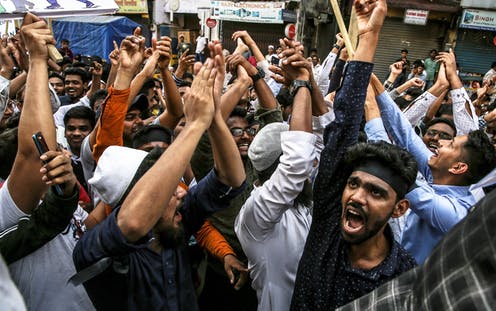The recent Cambridge University Press, 2020, by Andre Wink, The Making of the Indo-Islamic World, c.700-1800, and reviewed by Trinidadian Clara Mohammed-Foucault, published by the Guardian (Jan. 14th 2021).
The author “draw on original sources” by Islamic records and other accounts. He “counters the rosy-eyed claims” by Indian historians. Some historians of The University of the West Indies History Department are similar in the “unpalatable truths like slave-raiding.”
Wink wrote that “political rivalries too, were more a struggle to boost population than to acquire land – the Hindu Kush derived its name “killer of Hindus” from the hordes of women and children, carried off as slaves to the steppes of Asia, or was forced conversion to Islam. On his accession in 1632… Shah Jahan …deported…to Agra and forcibly converting them to Islam…thousands of Bengal enslaved captives.” Slavery in India surpassed African slavery in the Americas and Caribbean, while Africans were enslaved in Indo-Islamic world in this period.
The author has “a unique tribute to V.S. Naipaul, especially his book Beyond Belief :.Islamic Excursions among the Converted Peoples.” Naipaul has “look ownership of his ancestral history and acknowledged the responsibility to face up to that history.”
Through V.S. Naipaul, the Indian-Caribbean presence has a history that is in context. His An Area of Darkness, A Wounded Civilization; India: A Million Mutinies Now; and Finding the Centre showed that V.S. Naipaul has an interest in India and through him the Indian-Caribbean.
Andre Winks dealt with the Indo-Islamic World at the 1800, prior to the British Indian indenture in the Caribbean by Guyana, and Trinidad in 1845. Therefore, the legacy of African slavery and its post-emancipation Caribbean, and indenture must be put in historical context. The Islamic conquest in India is the root of Indian indenture in the Caribbean.
Wink’s recognition that “the study of ancient Indian history has been remarkably light on dates.” He suggested that the Ramayana and Mahabharata “may not have been completed until the Gupta era” (319-540) AD.
Peter Robb in his A History of India (2003) identified the Mauryans (322-185 B.C) of the Asthra Shastra, Kautilya and Ramayana of Valmike c. 300BCE, and the Mahabharata c 200 BCE K.D. Sethna in Ancient India in the A New Light (1999) used Asoka Maury in 950 B.C. Ancient India is still not clear about dates among historians.
The booklet The Indian-Caribbean Presence in Hindu History (2000) contains this perspective.
